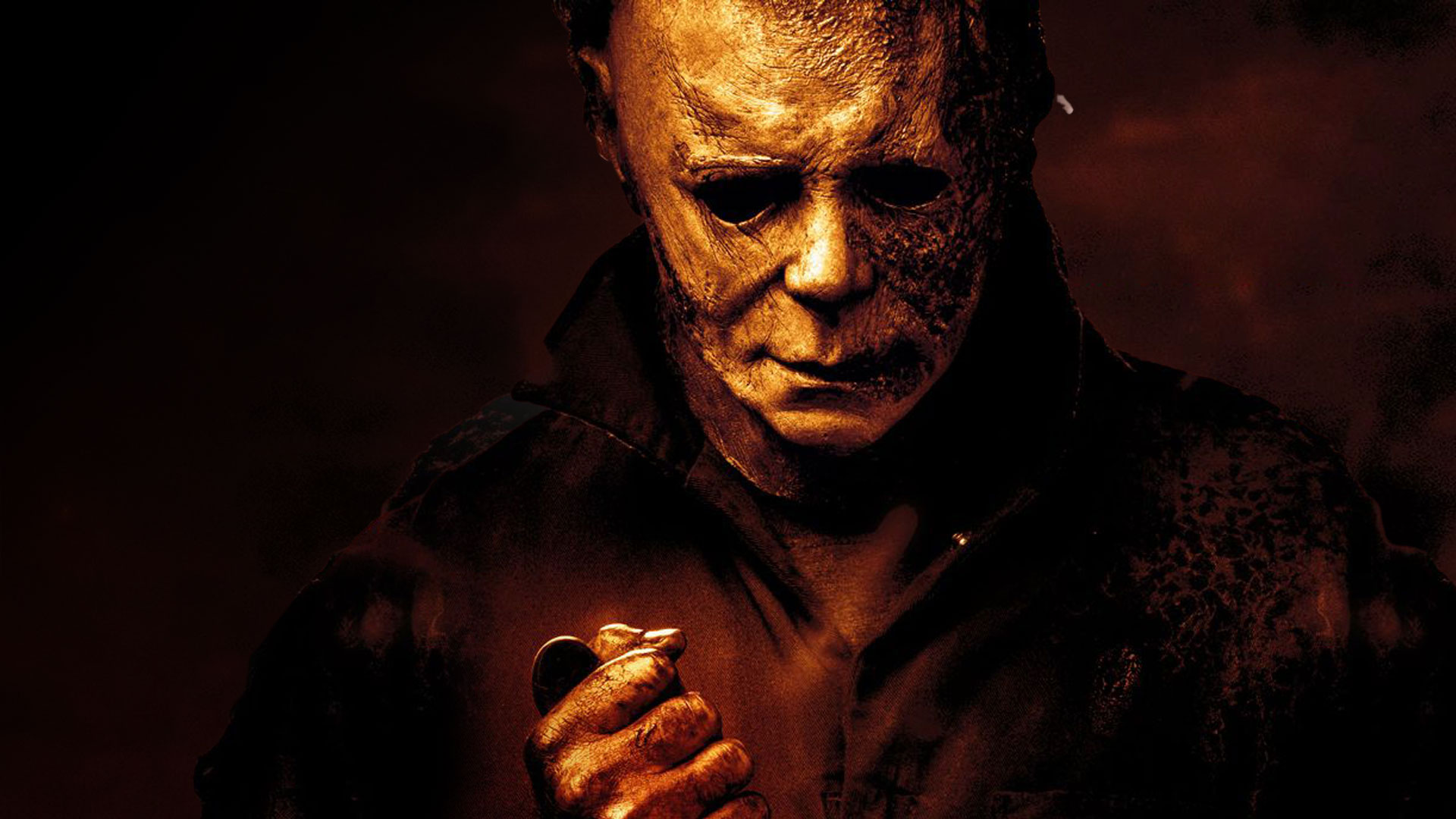As Roger Ebert frequently asserted, the first and most important question to ask of a film is what its makers intended, and the second is how well they executed upon said intentions. This, of course, does not allow for questioning whether what was intended/executed was worth doing—another matter altogether. Nonetheless, by Roger’s measure, Halloween Kills, the latest in the never-ending saga of unstoppable movie ghoul Michael Myers, succeeds: Intention: fan service, gory murder. Execution: proficient.
Halloween Kills is a professionally made slasher picture that is, at times, acceptably written, well-acted, technically adept and does a decent job balancing horror and humor. In other words, it is probably about as decent a film of its kind—with an admittedly limited intentions primarily about fan service and gory thrills—can be. It’s also a notch up from its dismal 2018 predecessor Halloween.
Written by director David Gordon Green, Danny McBride and Scott Teems, the new picture finds the duo trading the former picture’s hack-and-slash assembly line for a nostalgic excavation of John Carpenter’s original, reviving and extrapolating upon characters (and featuring original cast members) and locations from the 1978 classic.
Picture opens directly after the events of the last outing as venerable Laurie Strode (Jamie Lee Curtis) is carted off to the hospital with daughter Karen (Judy Greer, excellent) and granddaughter Allyson (Andi Matichak) after, they believe, boogeyman Michael Myers (James Jude Courtney) has perished in Laurie’s burning home. Breaking news—You Can’t Kill the Boogeyman.
After gruesomely dispatching Haddonfield’s fire and rescue team, Myers heads back to his old haunts. By now, everyone knows this drill, but Green begins his picture with a well-mounted flashback sequence set on that now legendary 1978 Halloween evening, impressively emulating the grainy emulsion, color scheme and locations of Carpenter’s landmark.
Halloween Kills is nothing if not fan service, which here means significant use of the extended Halloween family, including a returning Charles Cyphers as Sheriff Brackett, Nancy Stephens as nurse Marion Chambers, and Kyle Richards and Anthony Michael Hall (playing it too over-the-top straight) as formerly terrorized babysitting charges Lindsay Wallace and Tommy Doyle. There’s even the return of adolescent bully Lonnie Elam, played as an adult by Robert Longstreet. Each is put to fairly good use, even if callback material.
With Laurie back in the dreaded Haddonfield hospital (where she spent the entirely of 1981’s Halloween II, disavowed by the new series) and sedated for the film’s first hour, Michael roams the streets, randomly dispatching a handful of victims including a funny—and terribly brutal—double murder of an aged, bickering couple testing a drone in their living room.
There is also a competently staged showdown in a public park, some pre-teen pranksters (replete with Silver Shamrock Halloween III masks) who receive comeuppance and an amusing gay couple, realtors living in the handsomely rehabbed Myers house, who refer to themselves as Big John (Sean MacArthur) and Little John (Michael McDonald). Funny.
At 105 minutes, Halloween Kills takes some time for digressions, including Haddonfield cop Hawkins (Will Patton), who ends up in the same hotel room as Laurie, for whom he’s nursed a longtime crush and measure of guilt. Judy Greer also ups the ante here with a smart performance, doing work perhaps better than the film she is in. There’s also an unintentionally amusing, campy hospital declaration scene where Curtis reaches Medea-levels of melodrama.
The movie half-heartedly flirts with notions of riot mentality, straining for some contemporary zeitgeist but a bit of an overreach in an extended and unnecessary subplot involving another escaped prisoner. On the 2018 press tour, Curtis worked to shoehorn that outing into the MeToo movement, and this movie—in the hospital sequence where the townsfolk, who have banded together to hunt Michael (“Evil dies tonight!”), storm the facility—thinks it has something to say about the nature of mob rule.
Technical specs from cinematographer Michael Simmonds and John Carpenter himself, who composed the score with son Cody Carpenter and guitarist Daniel Davies, are slick and effective. Say what you will about Halloween Kills, but it’s professionally made.
We get the usual rumination on how evil can’t be destroyed, etc., etc., and another attempt to analyze Michael’s psychology. Near the conclusion it is made clear (if it wasn’t already) that the film’s only allegiance lies with its evil antagonist (probably in alignment with its audience)—no mere human is truly safe, even royalty members of the Halloween-verse. One actor does a credible job deepening a key character only to be gruesomely dispatched in the final sequence.
It seems impossible that a slasher film in 2021 could possess the visceral shocks of Carpenter’s 1978 original, which traded on light, shadow and color, as well as its marvelous score, to create a shattering aura of tension in the power of suggestion and primal fear; there was no explicit violence yet everything felt, like Janet Leigh cornered in Hitchcock’s shower, powerfully rendered, if mostly in our imaginations.
Halloween Kills isn’t interested in such suggestiveness or even genuine suspense-building. There are tense moments where the crazed killer is hiding in the shadows, but McBride and Green equate their horror with bursts of gore, and thankfully these moments are neither exploitative nor demeaning, as punishing as they sometimes may be. Gore aficionados will undoubtedly find affection in the creative methods of death, including a fluorescent light used to puncture flesh and an eye socket bludgeon that had the preview audience squealing.
McBride, Green and Tooms have also written some intermittently funny material, including a moment where an Anne Murray tune makes an unexpected appearance. They have also delivered a thriller welcomely free of the hyper-confident teen characters that permeate many mainstream contemporary horror films.
Perhaps it is better to judge a film like Halloween Kills against its genre rather than movies proper. It is easy to make slasher films that are crude, mean-spirited exploitation, and much of the genre’s golden era (1979 – 1984), inspired by John Carpenter’s seminal 1978 terror classic Halloween, reveled in cynically gratuitous sex and violence sans artistic distinction. But Halloween Kills, bloody as it is and lacking in much genuine suspense, has a few new ideas, a game cast and small ambition. On those measures, it works.
2 1/2 stars.



